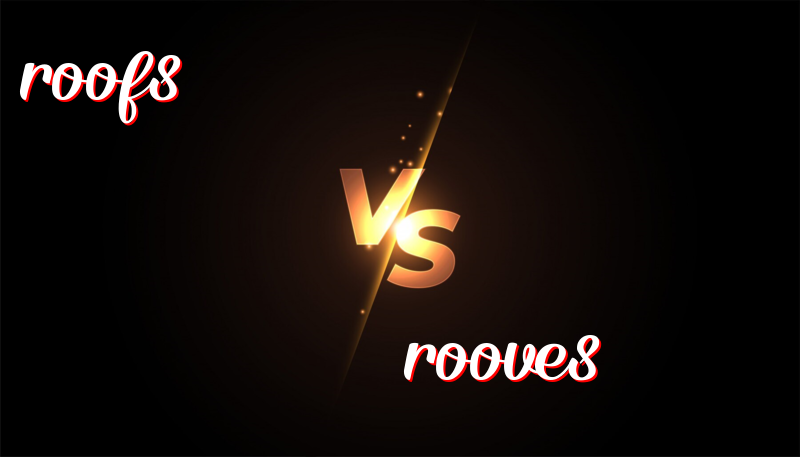英語單詞Roofs 與 Rooves的區別
January 19, 2025
「Roofs」與「Rooves」的差異
在英語中,「roofs」和「rooves」都是「屋頂」的複數形。但這兩者的使用的歷史與偏好略有不同。讓我們探討這兩個詞的用法和如何記住它們的區別。
歷史與用法
「Roofs」是現代英語中更普遍的用法。在語言演變過程中,人們更常用「roofs」來作為「roof」的複數形式。在英語中,大多數以「f」結尾的單詞在構成複數時會直接加「s」,如:beliefs, proof等等。
而「Rooves」則是較少見並稍顯古老的用法,主要在一些較舊的書籍或特定的方言中出現。類似的演變也出現在一些其他詞,如hooves(來自hoof),但整體趨勢在現代英語中漸少使用。
如何記住
記住這兩者的區別的一個簡單方法是:如果您不確定,使用「roofs」通常是更安全的選擇,因為它是現代英語中的標準拼法。而如果您在閱讀早期的文本或特定方言時遇到「rooves」,則可以理解這是該時期或地區的用法習慣。
例句
Roofs 的例句
- The city has installed solar panels on all the roofs of public buildings.
該城市在所有公共建築的屋頂上安裝了太陽能電池板。 - We could see the roofs of houses from the top of the hill.
我們可以從山頂看到房屋的屋頂。 - Heavy snow covered the roofs during the storm.
暴風雪期間,厚厚的積雪覆蓋了屋頂。 - The birds nested on the roofs of the old barns.
鳥兒在老穀倉的屋頂上築巢。 - The new roofs improved the energy efficiency of the buildings.
新的屋頂提高了建築物的能效。
Rooves 的例句
- In some old English dialects, people often said “rooves” instead of “roofs”.
在某些古英語方言中,人們經常說「rooves」而不是「roofs」。 - Rooves of the historical houses are made of thatch.
那些歷史建築的屋頂是由茅草製成的。 - The locals repaired the rooves after the strong winds damaged them.
強風損壞屋頂後,當地人修理了這些屋頂。 - Rooves had to be reconstructed to preserve the traditional appearance of the village.
必須重建屋頂以保留村莊的傳統外觀。 - He spoke of the old country where “rooves” was the common term.
他提到了舊時代,當時「rooves」是一個常用術語。
總結
總結來說,「roofs」是當今英語中更普遍且普遍接受的用法,而「rooves」則是一個較古老的形式,或許會出現在一些特定的場合或方言中。在日常溝通與寫作中,選擇使用「roofs」是更標準和合適的選擇。

Leave a Reply
You must be logged in to post a comment.